Guava or Psidium guajava from the Myrtaceae family is a popular fruit and commercially grown in the tropical and subtropical areas of Asia, Southeast Asia, South America, Africa, USA, Oceania and the Middle East. It is believed to have originated from Central and South America.
The fruit is well known for its positive health attributes, especially vitamin C and A, polyphenols and folate which are believed to reduce conditions such as constipation, management blood sugar levels and improve immunity. The fruit is normally consumed fresh, or processed into dried fruit, juice, puree and others.
According to FAO, the main countries producing guava in 2019 were India, China, Thailand, Indonesia, Pakistan, and Brazil with production of 21.8, 4.8, 3.8, 3.1, 2.3 and 2.1 million tons the same year respectively.
Each producing country has introduced and developed guava varieties both for domestic fresh consumption, processed products and for export.
As world’s top producer, India exports guava mainly to Nepal, USA, UAE, Qatar, Bahrain, Saudi Arabia and Oman. The value exported has quadrupled from 0.58 million USD to 2.04 million USD in 2021/22. The CAGR has been forecasted to grow at 4.5 percent for the period up to 2027.
There are many varieties grown in the different states in India, the most popular being Allahabad Safeda. There are also some improved varieties developed by the Indian Institute of Horticultural Research (IIHR), ICAR with the Safeda variety as a main parental line, such as the Arka Amulya variety.

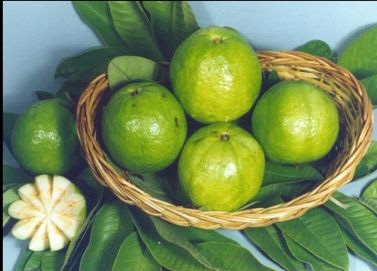
Improved production techniques as demonstrated by growers in India include high density planting, branch bending techniques, pruning and canopy management as well as adopting a range of propagation techniques such as nodal and terminal shoot cuttings, leaf cuttings and semi-hardwood cuttings techniques.
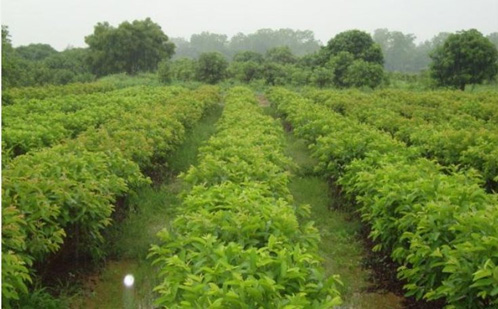

In Indonesia, guava, which is grown mainly on Java Island, followed Sumatra, has shown an increasing production trend from 162,120 mtons in 2002 to 422,482 mtons in 2022, mainly due to the introduction of the ‘Crystal’ variety and the consumer preference for its health attributes. Guava grown in Indonesia are mainly for the domestic market.
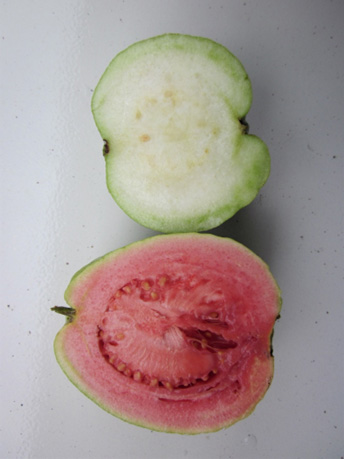
The area of guava grown in Malaysia has declined 58 percent from 4,180 ha in 2017 to 1,749 ha in 2022. This was attributed to the shift to planting other lucrative fruit types such as durian, which is now the main fruit type grown. Malaysia is 98 percent self-sufficient in guava with the fruit being exported to Singapore, Maldives, Germany, UK, Brunei with an export value of RM7- 8.2 million/ year in 2022. The most popular variety grown is the ‘Lohan’ variety registered as GU16. While production is lower, the fruit has seen growing popularity in markets in Malaysia with the ‘Lohan’ and seedless varieties. The ‘Crystal’ variety grown in Indonesia is also popular among consumers in Malaysia.
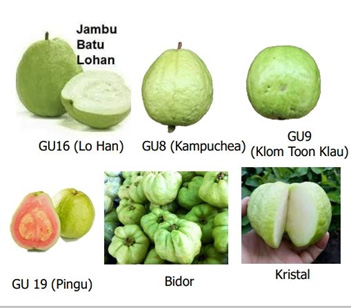
With increasing cultivated areas for the last 5 years, there has been an interest in expanding guava cultivation in China. Since the introduction of large guava varieties in 1979 and Taiwan in the 1980s, guava cultivation has expanded mostly in the southern provinces of Guangdong, Guangxi, Hainan, Fujian and Taiwan. Producing an estimated 4.3 million tons per year, in 2021, the export value was 7.6 million dollars, mainly to Hong Kong. China also imported 0.2 million dollars value from Taiwan.
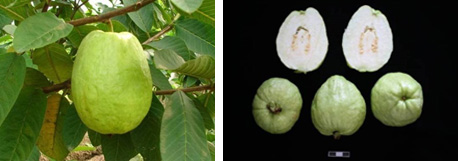
There have been a five-fold increase in growing areas in Fiji, as farmers have included guava as an important fruit crop. In Fiji, the initiative to go into commercial guava production began in 2014 with the government’s focus in research and development and establishment of orchards, leading to the current establishment of 40 commercial farms producing 200 tonnes of guava annually.
Generally, there is an increasing production trend in the producing countries. While guava is relatively popular, the export market is yet to expand. The consumer market for the fruit is anticipated to improve with superior varieties for export, good quality and taste with a longer shelf life and enhanced demand for processed products.
The future of guava is promising, as it adds to the other minor fruits that are increasingly popular such as durian, mangosteens, jackfruit, and longan. This is due to increasing productivity with improved field management, better quality and tasting varieties, longer shelf life because of better postharvest management, integrated pests and disease management, changing demographics (Asian diaspora) and health-conscious consumers.
Guava production, challenges and expansion prospects were discussed in an International Tropical Fruits Network (TFNet) organized webinar ‘Prospects and expansion of guava production and trade’ on Thursday 9th November 2023, which had the following objectives:
a. To share information among guava researchers, producers, processors and exporters on the current production, processed products, market trends and challenges in developing guava.
b. To share information among stakeholders on the various initiatives that can be taken to increase guava production and markets, including varietal development, best farm practices, postharvest management, research and development focus and policies to encourage its cultivation.
c. To discuss initiatives to enhance the visibility of guava in global markets.
d. To establish networking ties among guava and other tropical fruits stakeholders.
Speakers for the webinar were Dr. Vasugi C, from the Indian Council of Agricultural Research, India, Prof. Dr. Sobir from Bogor Agricultural University, Indonesia, Mr. Ahmad Hafiz Baharom, from the Malaysian Agricultural Research and Development Institute, Malaysia, Mr. Shalendra Prasad, Research Division Ministry of Agriculture, Fiji and Dr. XueHua Shao from the Fruit Tree Research Institute, Guangdong Academy of Agricultural Sciences, China. The webinar was attended by 135 participants from 16 countries.
It was moderated by Dorothy Chandrabalan and Yacob Ahmad from TFNet, for the presentation and panel discussion sessions respectively.
The webinar managed to present an insight of the different varieties grown, best practices, production and export status, best farm practices especially propagation methods, canopy management and planting density, consumer preference, processing options, market destination, challenges in production such as pests and diseases including fruit flies, nematodes and fungal diseases, varieties with better shelf life, and opportunities that abound from processing and increasing consumption of the fruit, in the producing countries.
In the ensuing panel discussion, presenters responded that since guava is a smallholders’ crop it makes a good fruit type to be grown as a mixed with other fruit types. Smallholders also need to consolidate as cooperatives or farmers group with good quality management to access markets. There seem to be many varieties grown each with its own strength in producing countries. Perhaps, this can be relooked and streamlined to a few varieties, for fresh consumption and for processing into puree, dried or other products. Can guava emulate the likes of the Hass variety for avocado, MD2 for pineapples, Tommy Atkins for mangos and Musang King for durian in tropical fruits global market? Current developments indicate favorable prospects for guava to be developed into a mainstream tropical fruit alongside other major tropical fruits.

